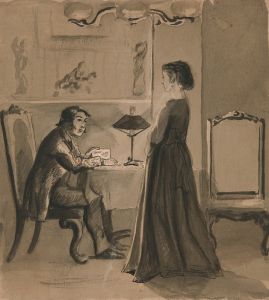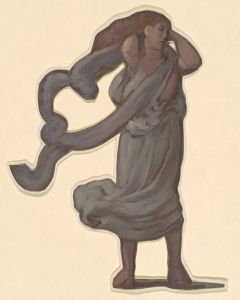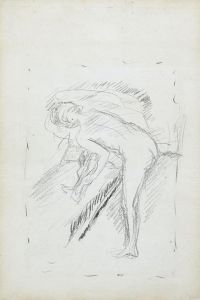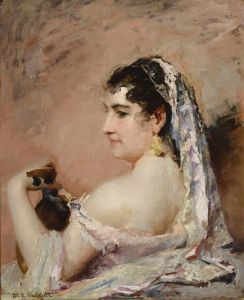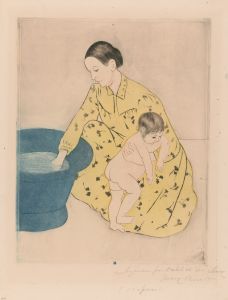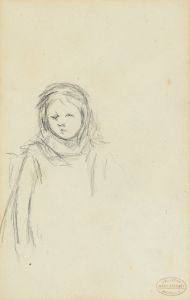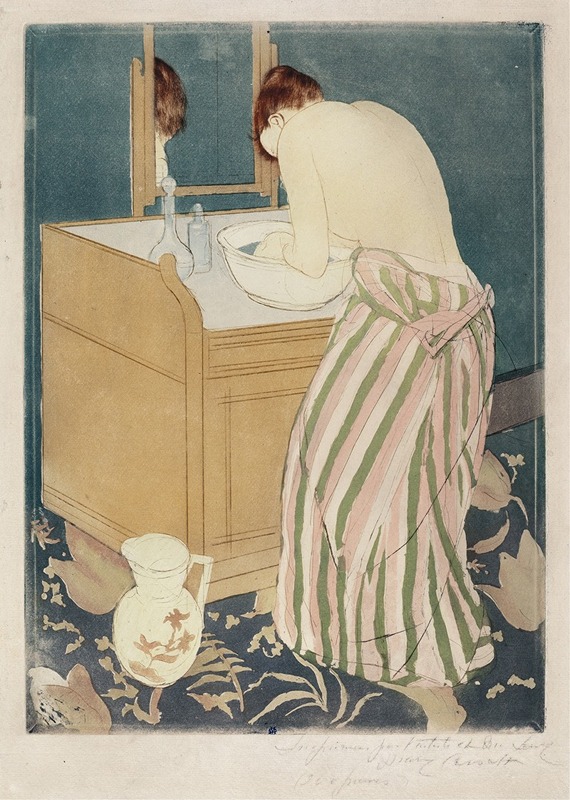
Woman Bathing
A hand-painted replica of Mary Cassatt’s masterpiece Woman Bathing, meticulously crafted by professional artists to capture the true essence of the original. Each piece is created with museum-quality canvas and rare mineral pigments, carefully painted by experienced artists with delicate brushstrokes and rich, layered colors to perfectly recreate the texture of the original artwork. Unlike machine-printed reproductions, this hand-painted version brings the painting to life, infused with the artist’s emotions and skill in every stroke. Whether for personal collection or home decoration, it instantly elevates the artistic atmosphere of any space.
"Woman Bathing" is a notable work by the American artist Mary Cassatt, created in 1890–1891. This artwork is part of a series of ten color drypoint and aquatint prints that Cassatt produced, which were inspired by the Japanese woodblock prints, or ukiyo-e, that she encountered at an exhibition in Paris in 1890. This series is often referred to as the "Ten Modern Women" series.
Mary Cassatt, an influential figure in the Impressionist movement, was known for her focus on the private and social lives of women, often depicting them in domestic settings. "Woman Bathing" exemplifies this focus, portraying an intimate scene of a woman engaged in her daily routine. The artwork captures a moment of personal care and reflection, emphasizing the simplicity and grace of the subject's actions.
The influence of Japanese art on Cassatt's work is evident in "Woman Bathing." The composition reflects the Japanese aesthetic through its use of flat planes, bold outlines, and a limited color palette. These elements contribute to the print's sense of harmony and balance, characteristics that are hallmarks of Japanese prints. Cassatt's adoption of these techniques marked a significant departure from the traditional Western art styles of her time, showcasing her innovative approach to printmaking.
In "Woman Bathing," Cassatt employs the technique of drypoint and aquatint, which allows for the creation of soft, subtle tones and delicate lines. This method was particularly effective in conveying the gentle, serene atmosphere of the scene. The print depicts a woman seen from behind, standing at a basin. Her body is partially draped in a towel, and her hair is tied up, suggesting she is in the midst of her bathing routine. The setting is sparse, with minimal background details, directing the viewer's attention to the figure and her actions.
Cassatt's choice to depict a woman in such a private moment was both innovative and reflective of her broader artistic goals. She sought to portray women as individuals with their own identities and experiences, moving beyond the traditional roles often assigned to them in art. By focusing on everyday activities, Cassatt highlighted the beauty and significance of women's lives, challenging the norms of her era.
"Woman Bathing" is housed in several major art institutions, including the National Gallery of Art in Washington, D.C., and the Metropolitan Museum of Art in New York. These prints are celebrated for their technical mastery and their contribution to the evolution of printmaking as an art form. Cassatt's work in this medium helped to elevate the status of prints, demonstrating their potential for artistic expression.
Overall, "Woman Bathing" is a testament to Mary Cassatt's skill as an artist and her commitment to exploring the lives of women through her art. Her innovative use of Japanese influences and printmaking techniques has left a lasting impact on the art world, securing her place as a pioneering figure in both the Impressionist movement and the broader history of art.





